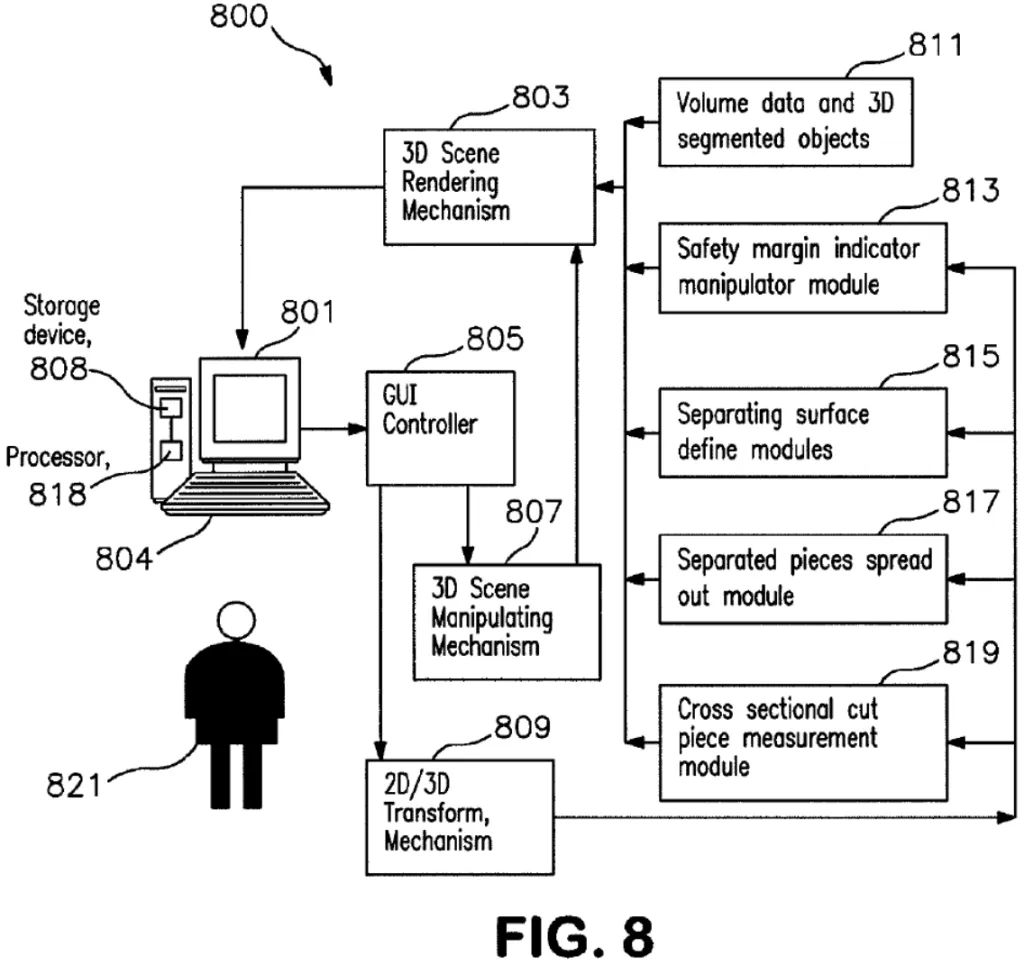This decision concerns conducting pre-operating assessments more efficiently and intuitively. However, the EPO considered this non-technical. Here are the practical takeaways from the decision T 2520/16 () of 23.3.2021 of Technical Board of Appeal 3.4.03:
Key takeaways
- Features aimed exclusively at improvements regarding the way information is perceived or processed by the human mind are generally regarded as non-technical.
- Features defining presentation of information may be considered to produce a technical effect if they credibly assist the user in performing a technical task by means of a continued and/or guided human-machine interaction process.
The invention
The subject-matter of the European patent application underlying the present decision was summarized by the Board in charge as follows:
2. The claimed invention
The claimed invention relates to a procedure and a system for performing pre-operating assessment of one or more anatomical structures.
Anatomical structures (e. g. a tumour) within organs (e. g. a liver) are rendered as 3D images in a 3D space and displayed at an output interface (e. g. a screen). One or more closed 3D volumes having a size and shape that are deformable represent(s) (a) safety margin indicator(s). These volumes are adjustable in order to conform to the shape and size of anatomical structures.
The user manipulates on the screen a safety margin indicator deforming it with respect to the anatomical structure it surrounds/encloses. The system provides immediate feedback to the user by re-rendering and displaying the deformed safety margin indicator immediately after the user's manipulation.
For example, the user (a surgeon) deforms the safety margin indicator displayed around a tumour within an organ so that they can visualise the part of the organ that has to be removed in the operation. The pre-operating assessment is carried out by visualising several possible deformations of the safety margin indicator and assessing which approach would be best for the subsequent operation.

Fig. 1 of WO 2010/132606 A1
Here is how the invention was defined in claim 1:
Claim 1 (main request)
A procedure for pre-operating assessment of one or more anatomical structures generated from medical images and provided in a rendered 3D space, comprising:
providing one or more safety margin indicators in the rendered 3D space on a user-perceptible output interface, each safety margin indicator defining a 3D closed volume shape and having a shape and size that are deformable and adjustable in order to conform to shape and size of anatomical structures within an organ;
receiving, from a user, an input for deforming one of the one or more safety margin indicators with respect to the anatomical structures;
converting the input from the user to parameters to be used for deforming the safety margin indicator;
generating a deformed version of the safety margin indicator based on the parameters; and
immediately rendering, on the user-perceptible output interface, the deformed version of the safety margin indicator.
Is it patentable?
According to the Technical Board of Appeal 3.4.03, the subject-matter as claimed would only differ in a minor aspect from the closest prior art document D1:
3.1.2 Summarising, D1 discloses a method and a system for rendering 3D and 2D images containing multiple volumes. The system allows a user to manipulate the volumes in the displayed images and provides real-time updating of the modified images (see for example paragraphs [0032] and [0038]). The description of the related art can be considered a hint that the system may be used in medical applications without any further details.
3.2 The claimed invention differs from D1 only in that the displayed volumes represent anatomical structures, organs and safety margin indicators. In other words, in the information the images convey to the user, i. e. their cognitive content ("what" is displayed).
The appellant did not agree to this assessment and argued as follows:
3.3.1 According to the appellant, the claimed invention comprised the displaying of 3D volumes representing anatomical structures. Making reference to paragraphs [0038] and [0039] as well as Figures 2a to 2c of the application, the appellant explained that the safety margin indicator was a closed 3D volume having shape and size that were adjustable to conform to the shape and size of anatomical structures. Based on input from the user, the safety margin indicator was deformed in its shape and/or size with respect to the anatomical structure (see also appellant's letter of 23 February 2021, pages 2 and 3).
3.3.2 In contrast thereto, the system of D1 displayed 3D volumes as stacks of cross sectional 2D images. The user's manipulation of those volumes consisted in moving section planes through the 3D volumes and displaying the corresponding cross sections (see appellant's letter of 23 February 2021, page 4).
3.3.3 These differences provided a technical effect in that they enabled the user to perform pre-operating assessment more efficiently and intuitively.
However, the Board in charge was not persuaded by these arguments. According to the Board, pre-operating assessment would be a cognitive process and therefore not a technical activity:
3.4.1 First of all, the board does not consider the pre-operating assessment in the context of the present application to be a technical activity, but rather a cognitive process that takes place in the mind of the user (a surgeon in this case).
Furthermore, the Board outlined that features that only aim at improving the way how information is perceived has to be regarded as non-technical. Only in specific cases can such features contribute to the technical character of an invention:
3.4.2 Second, according to established case law and practice, features aimed exclusively at improvements regarding the way information is perceived or processed by the human mind are generally regarded as non-technical.
Such features defining presentation of information may be considered to produce a technical effect if they credibly assist the user in performing a technical task by means of a continued and/or guided human-machine interaction process. Such a technical effect is considered credibly achieved if the assistance to the user in performing the technical task is objectively, reliably and causally linked to the features (see Case Law of the Boards of Appeal of the EPO, 9th Edition, July 2019, I.D.9.1.6 a)).
In the present case, however, the task performed by the user would be non-technical:
... the task performed by the user (pre-operating assessment) is not technical. Moreover, there is no indication of a continued and/or guided human-machine interaction process that might guide the user in performing this task. The user (surgeon) is provided with information to which they may react by, for example, changing their mind about the subsequent operation.
Since the distinguishing feature over D1 could not provide any technical contribution, the claimed subject-matter does not involve any inventive step within the meaning of Article 56 EPC. Hence, the appeal was dismissed.
More information
You can read the whole decision here: T 2520/16 () of 23.3.2021
The content of this article is intended to provide a general guide to the subject matter. Specialist advice should be sought about your specific circumstances.

